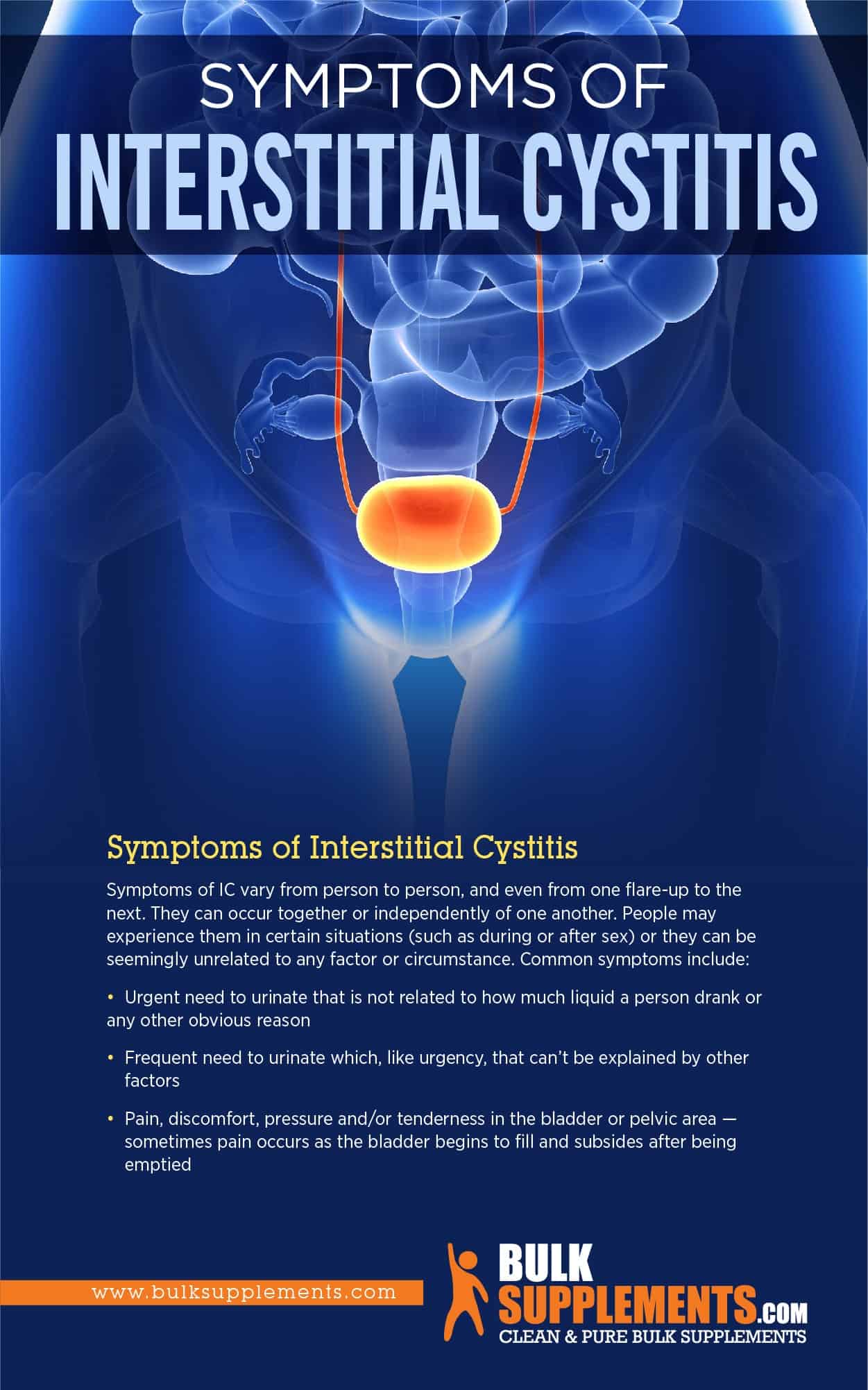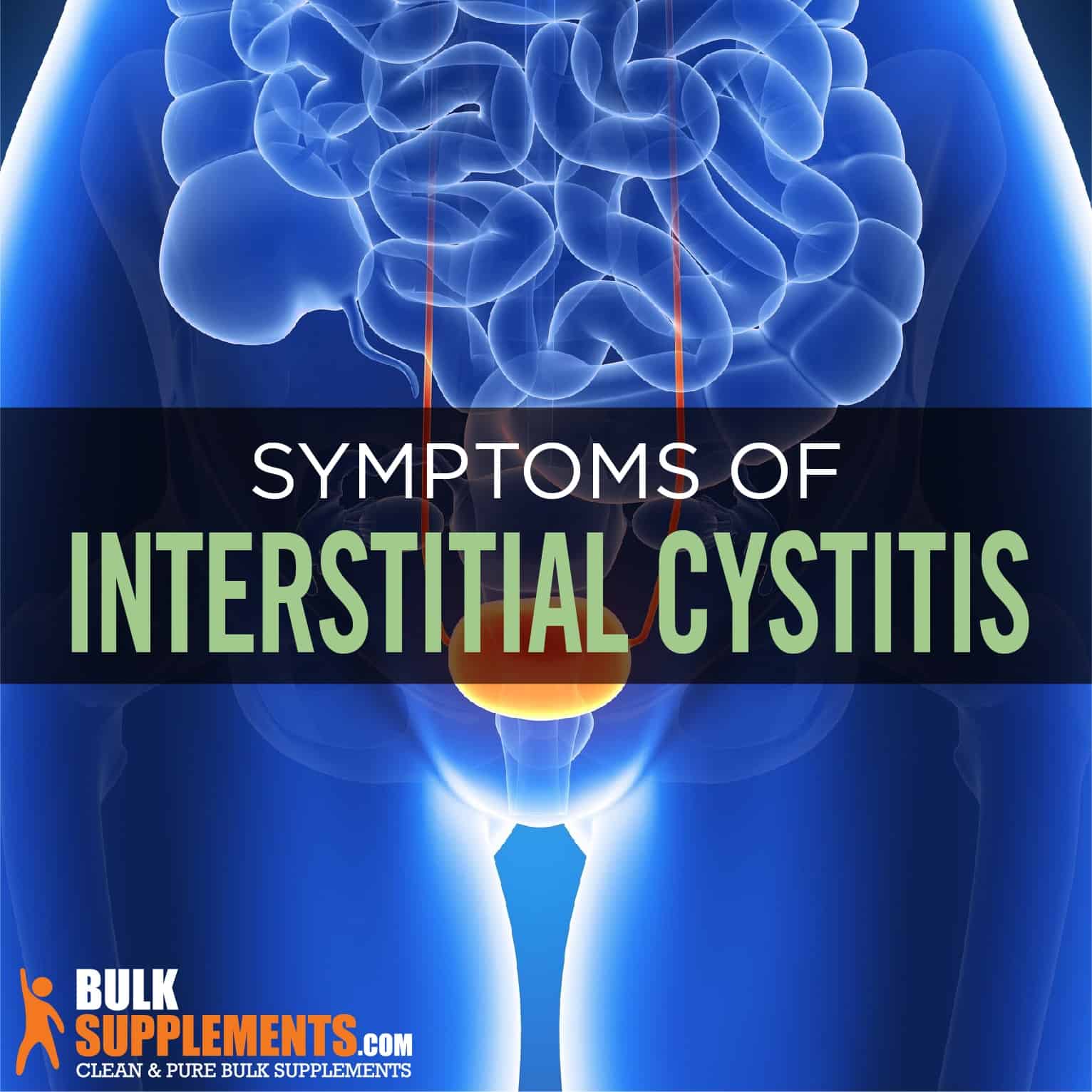What Is Interstitial Cystitis?
Also known as IC, interstitial cystitis is a chronic condition that affects the bladder. Over 12 million people in the U.S. experience it, with women making up 80 percent of cases. Although women are far more likely to develop interstitial cystitis, it can affect anyone regardless of age, gender or ethnicity (x).
People often describe the condition as a feeling of pain and pressure within the bladder area. Symptoms range from mild to severe and vary from patient to patient. Some struggle with urinary urgency, frequent need to urinate or intense pain in the bladder.
Other names for IC include painful bladder syndrome (PBS), bladder pain syndrome (BPS) and chronic pelvic pain (PCP). Researchers haven’t completely figured out the exact cause of IC, but some believe it stems from inflammation within various organs in the body (x).
Diagnosing IC can be tricky because it can co-exist with many other chronic conditions. Nevertheless, treatment is available once the patient and doctor get a better sense of the underlying cause. Medication, physical therapies and dietary supplements can all help provide relief.
Symptoms of Interstitial Cystitis
Symptoms of IC vary from person to person, and even from one flare-up to the next. They can occur together or independently of one another. People may experience them in certain situations (such as during or after sex) or they can be seemingly unrelated to any factor or circumstance. Common symptoms include (x):
- Urgent need to urinate that is not related to how much liquid a person drank or any other obvious reason
- Frequent need to urinate which, like urgency, can’t be explained by other factors
- Pain, discomfort, pressure and/or tenderness in the bladder or pelvic area — sometimes pain occurs as the bladder begins to fill and subsides after being emptied

Causes of Interstitial Cystitis
Currently, the exact cause of interstitial cystitis is unknown. Researchers are working hard to understand what brings on this condition and develop treatments that work. Some reported triggers include (x):
- Intake of certain beverages like caffeinated drinks or alcohol
- Dehydration
- Bumpy movements such as what might be felt on a bus ride
- Using a different brand of toilet paper or laundry detergent
- Emotions like stress or anger
- Sexual activity
- Menstrual cycle
- Taking certain medications or forgetting to take regular medications
- Strenuous physical activity
- Having an active urinary tract infection
Many people who suffer from IC are also prone to having other medical conditions like fibromyalgia, irritable bowel syndrome, chronic fatigue symptoms, allergies or other forms of autoimmune diseases. Vulvodynia, or prolonged pain within the vulva that often triggers a stinging or burning feeling or rawness, also can co-exist with IC (x, x, x).
Other possible causes for IC in men and women include unidentified infections, vascular problems, issues with the lining of the bladder and abnormal substances found in urine (x).
Research found that women with interstitial cystitis who’ve been sexually abused or assaulted exhibit a different set of symptoms compared to female IC patients who do not have such history (x).
Interstitial Cystitis Diagnosis
To diagnose interstitial cystitis, your doctor will first inquire about your medical history then conduct a physical exam. Women with IC symptoms may need a pelvic exam to check the pelvic floor muscles. Men’s pelvic floor muscles might also require examination through a digital rectal exam. In addition, this can help check for any prostate issues in men that might be causing the problem (x, x).
Additional lab tests might be necessary in order to make an accurate diagnosis. These include a urinalysis and urine culture to rule out the presence of a urinary tract infection (UTI). Doctors may also perform a cystoscopy, which allows them to look inside the urethra and bladder for swelling, redness or bladder ulcers (x).
Treatment for Interstitial Cystitis
Because the underlying causes of IC can vary, there isn’t one standard treatment. However, lifestyle habits, medications, physical manipulation of the bladder and dietary supplements can all be part of the overall treatment plan.
Lifestyle Adjustments
Sometimes, small changes in lifestyle can make a big difference in the management of chronic conditions. Here are some suggested ways to help cope with and minimize the effects of IC (x):
Eating Healthy Foods
People who deal with IC quickly realize that certain meals or drinks can trigger symptoms. Staying hydrated is also of utmost importance for people with IC.
Don’t Use Tobacco Products
Although researchers are not sure why smoking complicates IC, people often report that smoking makes their symptoms worse.
Reduce Stress Levels
Even if stress doesn’t cause IC, it is a common trigger for flare-ups.
Exercise
While strenuous exercise can bring on symptoms, gentle movements like walking and yoga can actually help.
Seek Support
IC can be socially isolating and affect people’s quality of life. Having support is important.
Bladder Training
The purpose of bladder training is to condition your bladder to hold more urine. IC patients with bladder pain often feel the need to go to the bathroom as soon as they detect any sensation or pain. Bladder training, once the pain is under control, helps to train the bladder to hold more urine before having to void it. After a week or two, the time between bathroom trips can be stretched by 10 or 20 minutes (x).
Bladder Procedures
A few different medical procedures have been developed to help with pain and symptoms of IC (x).
One is called bladder installation or bladder bath. It requires the use of a catheter to insert liquid into the bladder. This liquid contains substances that can reduce inflammation and provide pain relief such as steroids, dimethyl sulfoxide (DMSO) or lidocaine. Repeating this procedure every week or two can help contain symptoms.
Another procedure involves bladder stretching. In this case, a doctor will fill the bladder with liquid to the point of stretching. Experts aren’t sure why this helps some patients feel better, but it may work by temporarily blocking pain signals.
Physical therapy may be indicated for IC stemming from a weak pelvic floor. Finally, surgery may be an option in some cases.
Medication
Some medications help with the chronic pain and persistent urinary symptoms of IC. These typically include one or more of the following (x):
- Antidepressants. Studies show that multiple classes of antidepressants including TCAs and SSRIs reduce pain and the urgent need to urinate.
- Antihistamines. For people whose IC stems from mast cell degranulation, these medications may be most effective. Options include hydroxyzine, Claritin and Benedryl.
- Painkillers. Over-the-counter pain relievers like acetaminophen and ibuprofen can reduce pain and inflammation. A doctor might prescribe stronger medications if needed.
Supplements for Interstitial Cystitis
L-Carnitine
Carnitine is an antioxidant amino acid that promotes cardiovascular, muscular and cognitive health. It may also support bladder function (x, x). This supplement can be taken in doses of 500 mg one to two times daily.
Chondroitin Sulfate
Chondroitin sulfate ensures healthy bones, skin and joints. It also helps prevent joint degeneration by producing collagen. This compound has usefulness in the treatment of IC as part of a bladder installation solution. Its relevance as an oral supplement for IC is still unclear and research continues in this area (x). The recommended dose is 750-1,500 mg daily or as directed by your doctor.
Sodium Hyaluronate
A member of a protein family called glycosaminoglycans, sodium hyaluronate is an essential part of the connective tissue. It may also be useful as part of a treatment plan for IC (x, x). The suggested dosage is 100 mg, to be taken twice daily.
Glucosamine Sulfate
Glucosamine sulfate is another supplement that benefits the health of connective tissue. As it pertains to IC, it can help reduce pain, inflammation and underlying causes of symptoms (x, x). Take in doses of 1,000 mg three times a day or as directed by your doctor.
Quercetin
This supplement is a flavonoid antioxidant that could increase vitamin C levels and improve immune function. In studies, quercetin helped relieve symptoms of IC (x). Take between 250 mg and 500 mg of quercetin to be taken three times a day or as directed by your doctor.
Pure D-Mannose Powder
Pure D-mannose powder promotes the overall urinary tract health (x). The recommended dosage is 2,000 mg daily to be taken with water or as directed by your doctor.
The Bottom Line
IC can drastically impact people’s lives. The frustrating thing is that we still don’t know exactly what causes it. Many factors including food, beverages, stress, immune status, muscle spasms, chemical sensitivity and infections contribute to the onset and flare-ups of this chronic disorder. While anyone can experience IC, women are most often affected.
Because the underlying causes of IC are so multifactoral, treatment must be as well. Luckily, multiple therapies exist that can be used alone or in combination to provide relief. Changes in lifestyle, medication, bladder procedures and dietary supplements can all reduce symptoms to various degrees and provide relief, even if temporary.


